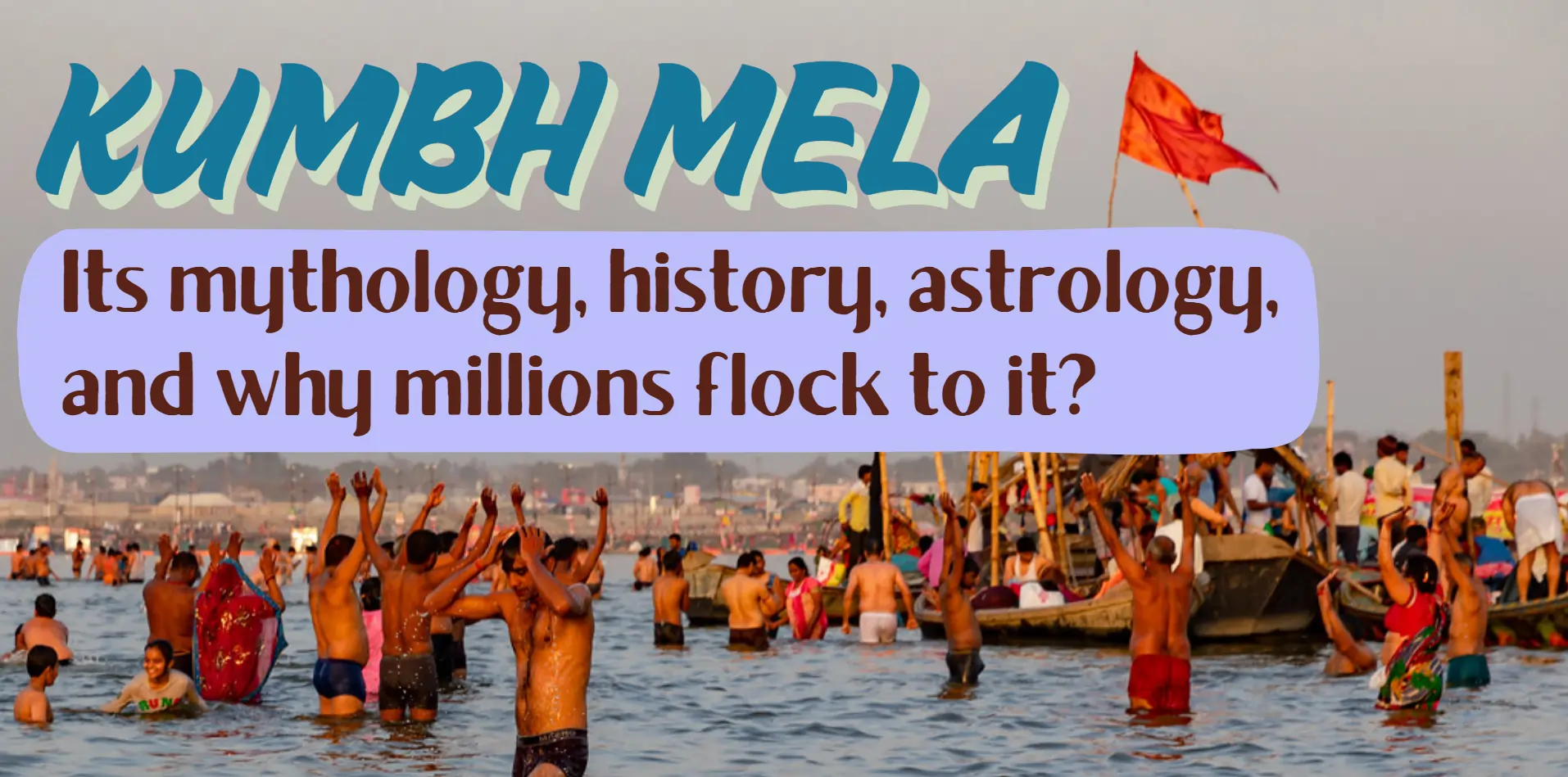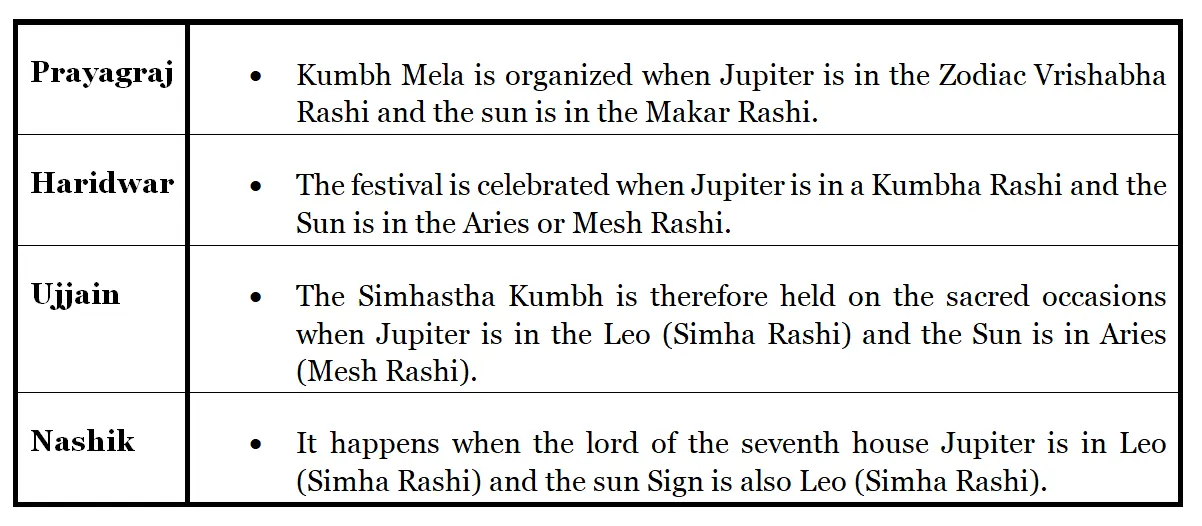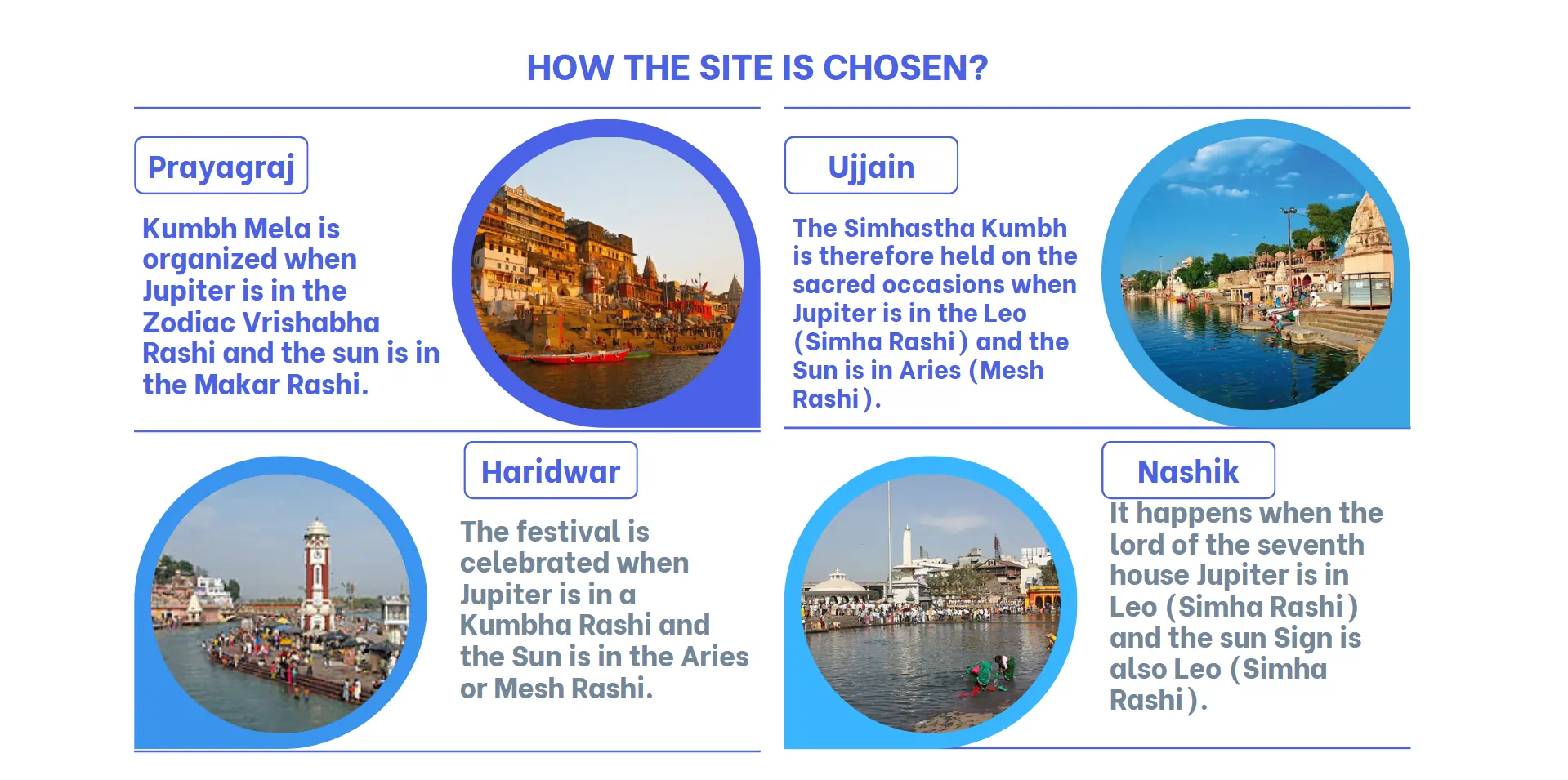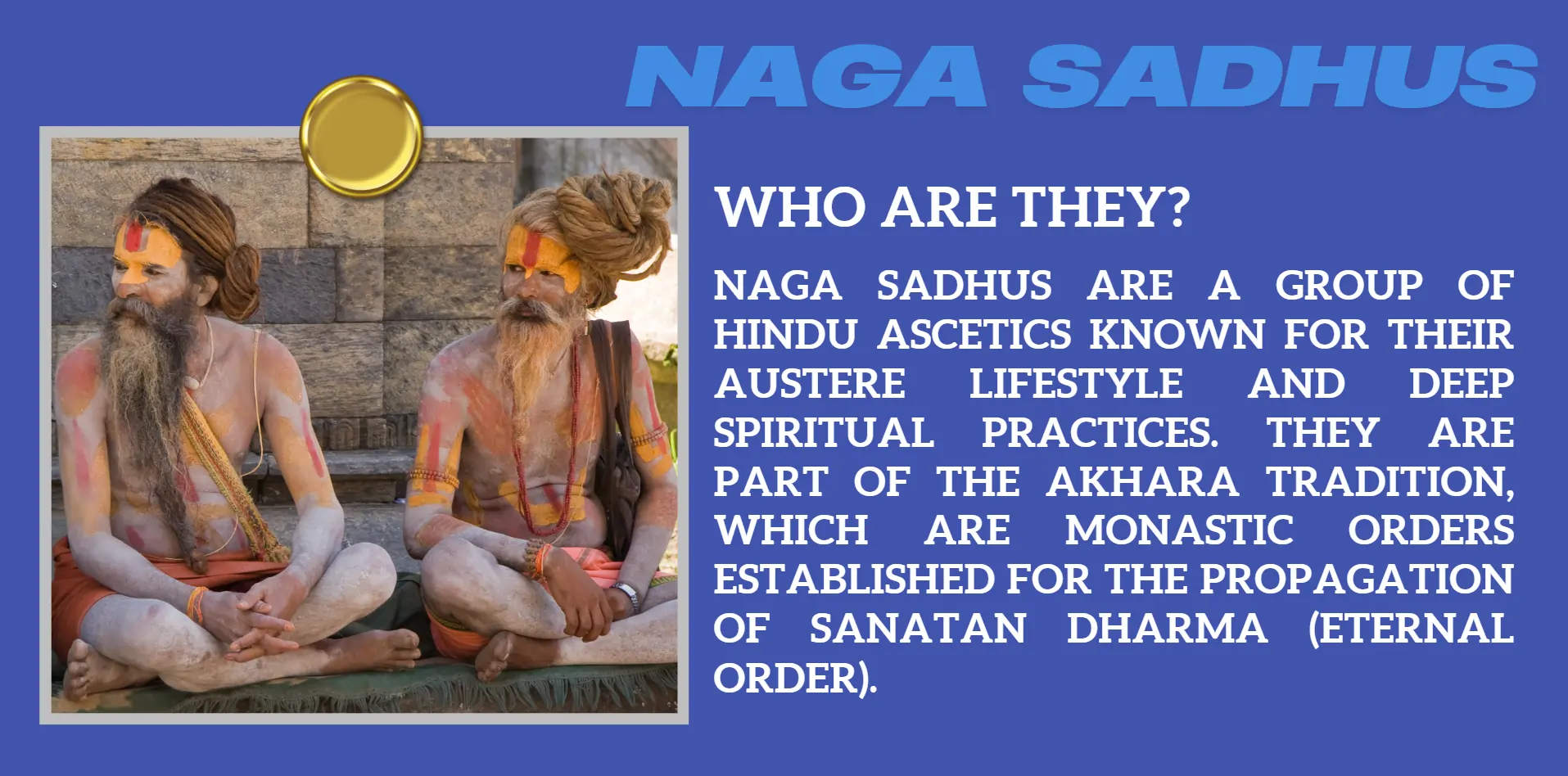
It is held every 12 years and attended by devotees who bathe in the sacred river; the Kumbh Mela described as the largest assembly of people on the planet. It has its origin from the religious soil of India and has assimilated mythology, history, astrology and above all faith in its truest sense. For Watching Republican Hindu Calendar duration of 12 years millions of pilgrims, ascetics, sadhus and tourists gather at selected river fronts to perform rituals which are pre historic in origin. Why does the Kumbh Mela garner such massive attendance and what purpose does this massive ceremony serve? It is now high time for us to explore mythology, history and astronomical importance of Kumbh Mela.
Mythology
One of the oldest Hindu mythology, "Samudra Manthan," which describes the churning of the ocean, is linked to the emblems and significance of the Kumbh Mela. It is said, the Devas or the gods and the Asuras or the demons were always in a state of competition with each other. Who with a view to achieving emancipation accepted to churn the ocean of milky sea to obtain the divine nectar Amrit. By the grace of Lord Vishnu, usage of Mount Mandara as the churning rod and Vasuki as the churning rope Amrit came from the water.
As the Amrit appeared, a conflict started to take place between the Devas (Good ones) and Asuras (bad ones). In an attempt to safeguard the Amrit, the celestial bird Garuda carried it away, spilling drops at four locations: Prayagraj, Haridwar, Ujjain and Nashik. These drops are said to have holy or purifying water and it is for this reason that Kumbh Mela is held at these four places; the cycle for each being 12 years.
History
The history of the Kumbh Mela festival dates back to classical age with reference in the literature as either on the travelogues. The first sources mentioned the existence of the this by the Chinese traveler Xuanzang, who visited India in the VII century. He gave the account of a large congregation on the river frontage of the Ganges where people performed some rituals as well as other related activities.
This fair gradually evolved and became more popular over the centuries where apart from devotees pure pilgrims, scholars, and seekers of philosophical knowledge came to visit. Many rulers of India sponsored the fair in medieval years; hence, there was no problem in the organization of the fair and security. Start from the British period the description about the Kumbh Mela becomes much elaborate including its importance and magnitude.
Astrology
Determining the Kumbh Mela period requires careful consideration of the horoscope. The festival is performed according to the given planetary positions that are considered to favour the spiritual vibrations of the journey. The first one is the placement of Jupiter (Guru) and the Sun (Surya) in the Zodiac and the locations on the river bank.

These zodiac signs are regarded as very auspicious and are also a strong spiritual belief that bathing in the sacred rivers bestows sins and results in moksha.
Why Millions Flock to It?
This is actually a very much true with Kumbh Mela, due to the fact that it is one of the world’s largest religious gatherings. Though, what does attract millions of people to this event are:
- Spiritual Cleansing and Liberation: The main reason behind people’s travel is the idea of decreasing sin and punishment through washing in the holy river. It was a tradition during Kumbh Mela sacred bath would wash away the sins of a person and help in achieving moksha or liberation from rebirth.
- Cultural and Religious Significance: The Kumbh Mela is multi-cultural event, where people of different faiths and saints from different regions come together. As far as one can get a chance to observe a variety of rituals, ceremonies and discourses spoken by renowned spiritual personalities. The occasion is also characterized by the naked Indian holy men, called Naga sadhus, who are devoted to Spartan practices and rigid spiritual abstinence.
- Community and Camaraderie: A communion and solidarity among the Kumbh Mela pilgrims is manifested through the religious occasion. In one way or the other, people from different social, economic and geographic classes are found in this region. Through a status of faith and devotion the levels of interaction become soulful and lasting.
- Cultural Exchange and Learning: The Kumbh Mela festival facilitates exchange of culture and interchanges of ideas. Academic and religious gurus, science experts, and devotees of Hinduism come to the festival to learn and share their ideas and philosophies of Hinduism and India.
- Spectacle and Experience: This is why for many people the Kumbh Mela is merely a spectacle which can be witnessed only once in a lifetime. This something in the scale, exciting energy, and the millions of people’s gathering makes an impact, which can be sensed as intimidating and at the same time, measurable only by expanding one’s humility. There are several things that can be watched and admired while witnessing the processional ceremony: the lines of devotees taking baths in the rivers at dawn, the singing and chanting are unforgettable.
What are Ardh Kumbh and Maha Kumbh?
The Kumbh Mela, renowned as one of the largest religious gatherings in the world, has two significant variations: Two primary derivatives/branches of the Kumbh are there which are known as the Ardh Kumbh and the Maha Kumbh. These two are two of the most spiritually significant events of the year and millions of people attend both, but there are differences in their schedules and in some details of the ritual part. Now let’s delve into what makes Ardh Kumbh and Maha Kumbh different from each other and learn about their deeper meaning.
Ardh Kumbh
Ardh translates to half, therefore Ardh Kumbh is half Kumbh Mela, thus meaning it is held half way through the holding of the Kumbh Melas. Essentially, the Ardh Kumbh Mela is held every six years at two primary locations: Prayagraj and Haridwar.
- Prayagraj: According to the Indian calendar, Ardh Kumbh is celebrated during the month of Magha, when Jupiter shifts to Aries and the Sun and Moon are in Capricorn.
- Haridwar: This festival is held during Jupiter’s Aquarius and Sun’s Aries.
The term ‘Half Kumbh’ doesn’t it make it any less popular where millions of devotees arrive to take the holy bath in the holy rivers. As it is with the full Kumbh Mela festival, Ardh Kumbh Mela also consists of many rituals and ceremonies, in which millions of devotees immerse themselves in water for sins’ purge and salvation.
Maha Kumbh
The mega-festival known as the Kumbh Mela takes place once in 12 years, it takes place at Prayagraj.
- Prayagraj: The Maha Kumbh festival is conducted when Jupiter is in the Taurus constellation while the Sun is in Capricorn the Magha month.
While many pilgrimages are massive in number and have their addictive spiritual energy, the Maha Kumbh Mela stands alone in the scale of both aspects. People from all over the world come to Prayagraj for ‘Snān’ in the holy waters of Prayagraj at the triveni, a confluence of Ganges, Yamuna and mythical Saraswati rivers. It is thought that bathing at these waters cleanses a person from their sins and results into salvation (moksha).
The Maha Kumbh Mela is also synonymous with formal representatives of many spiritual sects, faith healers, and ascetics who come here to give sermons and explanations, perform ceremonies, and engage in discussions. The sight of Naga sadhus, ascetics who renounce worldly possessions and lead austere lives, is a unique feature of the Maha Kumbh.
Why is it Celebrated Once in Each of the Four Cities?
The Kumbh Mela is uniquely celebrated in four distinct cities in India. Choice of these cities has places in Hindu mythology and beliefs in astrology.
As per the story of Samudra Manthan when gods and demons were churning the ocean to get amrut or the nectar of immortality, there was a bird known as Garuda to guard the nectar. Some of the nectar's drips fell and cleansed these cities as Garuda carried the Amrit. It is thought such drops have sanctioned these waters with special, divine qualities that transformed these cities into religious destinations.
The Kumbh Mela takes place once in 12 years and is connected to particular astrological positions. Different cities are required to hold the Kumbh Mela at different points in time and the positions of Jupiter and the Sun in zodiacs for this determine the cyclical nature of the event.
Hence there is the reinforcement of mythological and astrological forces not only the religiosity of these cities but also the historical and cultural significance of the Kumbh Mela festival.
How the Site is Chosen?

The location of Kumbh Mela is decided with the help of the Vedic Hindu Mythology and with the help of the astral charts as well. According to the legend of Samudra Manthan, the celestial bird Garuda spilled drops of the nectar of immortality (Amrit) at four locations. These cities are regarded to be blessed with these divine drops, therefore, such cities are viewed as sacred pilgrimage destination.
The Kumbh Mela and its frequency and venues are determined by astronomical and astro-geographical sciences. The festival is held when Jupiter (Guru) and the Sun (Surya) align in specific zodiac signs, which vary depending on the location. These astronomical signs decide the year and the place of each Kumbh Mela so the festival is performed periodically on these divine places, which come once in 12 years.
What Pilgrims Do at Kumbh?
The Kumbh Mela is an austere affair that attracts millions of devotee all over the globe. Such pilgrims perform several religious and cultural activities most of which have their own meaning.
- Holy Dip in Sacred Rivers: The main religious rite for the pilgrims is washing in the holy waters of those rivers. More so it is considered that taking a dip in these waters during the Ardh or Kumbh Mela absolves one’s sins and gives merit. Out of the four major meetings, the most sacred path is the triveni where Ganges, Yamuna and the mythical Saraswati join at Prayagraj.
- Prayers and Rituals: People go through worship, invocation and religious recitals and even sermons delivered by religious scholars and preachers. These activities help them maintain top spiritual capital and give them enough purpose or reason to live.
- Processions and Darshan: Spectacular processions featuring Naga sadhus, ascetics, and various religious orders are a highlight. The pilgrim look for the blessings (darshan) from such holy men who are mostly recluses who have followed the austere life, meditation, and spiritual knowledge.

- Cultural Engagement: In addition to the religious-purpose, the Kumbh Mela is a fete plus a showcase of North Indian culture and tradition. They perform sacred songs and spiritual song and dance, formation, drama recitals, and other forms of entertainment that touches cultural aspects of India.
- Community Interaction: First of all, the festival contributes to active formation of people’s unity. People of all sorts who are involved in pilgrimage visits interact by sharing their experiences and also remind one another of the purpose they have in common.